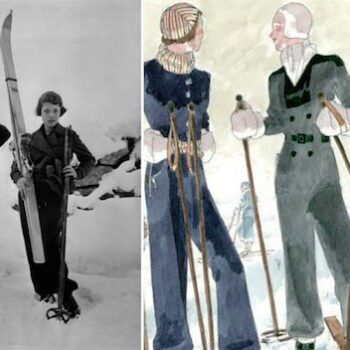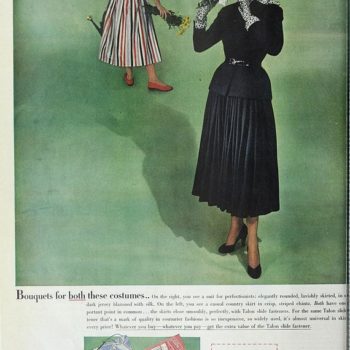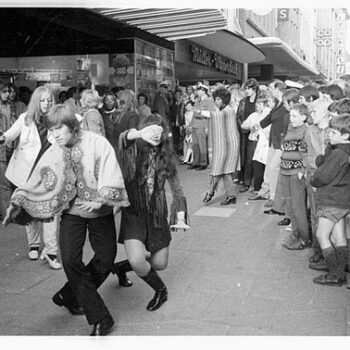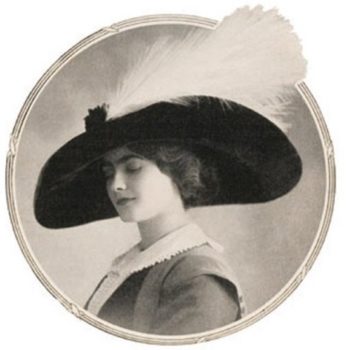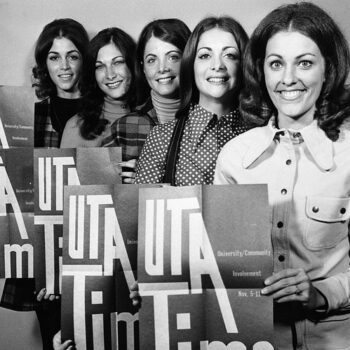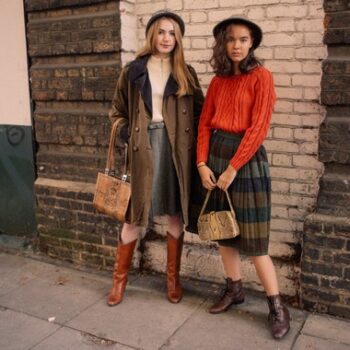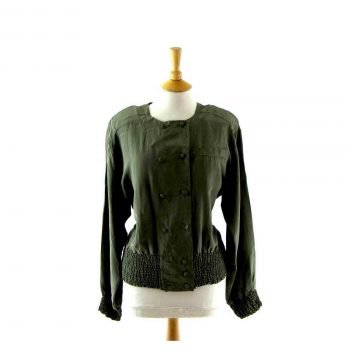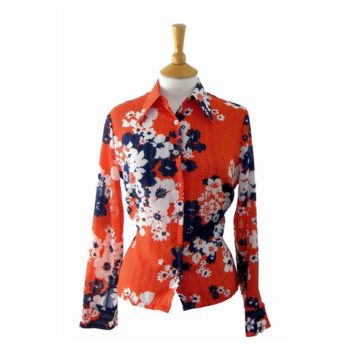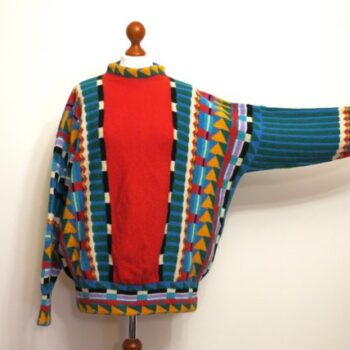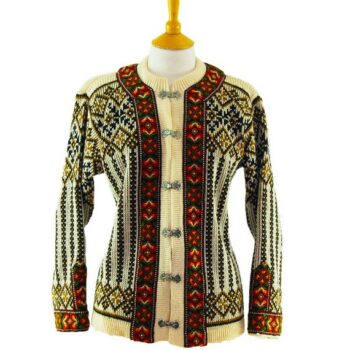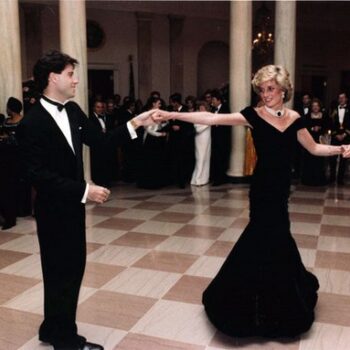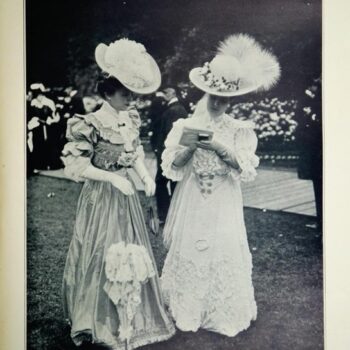Paul Poiret – Womens fashion 1911
March 27, 2016Paul Poiret was one of the most radical and desirable designers of the 1910s. In search of “a new kind of beauty”, he revolutionised womens fashion 1911,creating richly coloured empire line outfits with harem pants and turbans, a world away from the pastels, frou frou and highly tailored couture previously in fashion.
He was influenced by the Ballet Russe when they came to Paris and started to design clothes for women with all kinds of non-Western influences – Turkish inspired harem pants, Japanese kimono-like wraps, and Indian turbans. The influence was not as important as the overall effect – he liked shimmering silks in jewel colours, and elegant, simple lines without fussy ruffles and complicated decoration. Fur trim and beads were favourite embellishments.
Womens fashion 1911 – Hellenic style
His “Hellenic Style” high waists were at the forefront of a new shape in clothing. It is said that he freed women from corsets, but that isn’t entirely true. He championed the boyish figure well before Chanel did in the 1920s, preferring a slim, flat chested look for his beautiful young models who didn’t wear corsets under the clothes. However a lot of women in the real world needed to wear a corset to achieve that look – just a different sort to the waist pinching one that other designers required.
A long line, bust suppressing corset that smoothed out womanly curves was often discreetly employed. However, in time it started to become more acceptable for women of all shapes and sizes not to wear one, giving rise to the bra instead.
Paul Poiret
Poiret said in his autobiography that this “freedom from the corset” was just an incidental side effect of his search for a new look. In fact, he was also one of the inventors of the “hobble skirt”, a narrow skirt which restricted the stride so much that the wearer could only take teeny tiny steps. The Poiret woman may have been uncorseted, but was hardly sartorially free.
It was probably not a coincidence that his wife, the unprepossessingly named Denise, had just the kind of figure that suited that new beauty. “My wife is the inspiration for all my creations; she is the expression of all my ideals.” he told Vogue Magazine in 1913.
Poiret was a show man, and it didn’t matter that much to him how well made his garments were, so long as they looked fabulous and made an impact. They were made in gloriously heavy expensive silks and velvets – he often employed upholstery fabrics – but seams could be a little wobbly and the finish often wasn’t great. But it didn’t affect their popularity and women loved the novelty of his work.
Womens fashion 1911 – Schiaparelli’s beginnings
The couturier Elsa Schiaparelli, who would become famous in the 1930s describes going to a Poiret catwalk show with a much richer friend when she was young and impoverished. As her friend browsed backstage Schiaparelli cheekily slipped on a dramatic, sweeping Poiret evening coat. The great man himself popped out to say how much it suited her, and how she should definitely buy it. She explained that she couldn’t afford it, and so he gave it to her. He became a friend, and gave her many more of his outfits, so she describes walking the streets looking like a fashion leader one day, and the next “like my own ugly sister”.
Schiaparelli, an untrained designer, was very much influenced by Paul poiret even before she met him. She describes going to a ball and having nothing to wear, so she went out and bought several yards of heavy crepe de chine silk in navy blue. This she wound around her body and passed through her legs to make a baggy trouser suit, with a length of orange silk as a sash and the leftover orange as a turban. All this she pinned into place. The whole thing was very Poiret-esque. According to her, as she vigorously danced, the pins flew out and by the end of the night the outfit had disintegrated, leaving her clutching folds of fabric to her bosom.
Outfits for friends
She also made outfits for friends. One was invited to be a hostess for one of Paul poiret’s famous parties and since it didn’t seem to occur to him to lend her an outfit, Schiaparelli came to the rescue. Hopefully having mastered the idea of needle and thread by now, she made her an imitation Poiret that drew many compliments. Schiaparelli went on to become one of the most famous couturiers of the twentieth century, and her final style was much more structured, but this is how she got her start in designing.
Womens fashion 1911 – Oriental influences
Schiaparelli wasn’t the only one to imitate Poiret’s style. Loose, draped designs in bright colours and heavy fabrics were also produced by Callot Souers, Jeane Lanvin, Jeanne Paquin, Charles Worth and Mariano Fortuny, as well as less well-known designers like Amy Linker, Laferriere, Beer’s and Martial & Armand. But was it really imitation?
Paul poiret claimed he was the first and that he invented this style, but had been a huge interest in all things Japanese since 1853 when they opened their borders, allowing trade and tourism from the Western world; and when an unexpurgated A Thousand and One Nights was translated into English in 1882 Europeans swooned, imagining themselves as exotic Arabic princesses. Then there was the Ballet Russe, as mentioned above, with its thrilling costumes by Léon Bakst which debuted in 1909. So Orientalism was definitely in the air.
Womens fashion 1911 – Paul Poiret’s beginnings
Paul Poiret’s house was established in 1903. He was born in 1879 and had apparently always been arrogant, as his parents decided to apprentice him to an umbrella maker to teach him some humbleness. Big mistake. He loved the brightly coloured silks, carefully collecting all the scraps and using them to make doll sized outfits. He created fashion designs in his spare time, and as a teenager sold his drawings to a society dressmaker.
Paul poiret’s designs continued to sell to more and more revered clients, including the highest Parisian couturiers, until in 1896 he started to work for Jaques Doucet where his work was tremendously popular. He moved to the House of Worth, but his designs got bolder and more unconventional. The “brazen modernity of his designs,” confused some of Worth’s more conservative clients. He created a coat with a kimono-like cut for the Russian Princess Bariatinsky but she didn’t appreciate it, apparently saying “What a horror! When there are low fellows who run after our sledges and annoy us, we have their heads cut off, and we put them in sacks just like that.”
So in 1904 Paul poiret established his own house, where plenty of people did appreciate him. It was financed by his mother. He publicised his designs with fashion shows featuring beautiful girls wearing his designs, quite a new idea at the time. The London-based designer Lucile (Lady Lucy Duff-Gordon) was doing this too.
Womens fashion 1911 – Pochoir prints
Paul poiret’s first catwalk collection was in 1908. These images are of his second collection which was held in 1910. (The book was published in 1911). They are a kind of catalogue, illustrated by Georges Lepape who was commissioned to record Poiret’s ideas in a lavish book entitled “Le Chose de Paul Poiret vues par Georges Lepape”. Each book was hand-made, and the images reproduced on heavy paper with a technique called “pochoir print” – which was a kind of labour intensive hand stencilling producing brilliant colours and a fine finish. The book was produced in a low edition and, despite its cost, was a very covetable item.
Another thing that the House of Lucile did was to create a lifestyle brand. There was a House of Lucile perfume and in 1911 there was a House of Poiret perfume too, called Rosine after his daughter. Rosine was the first French couture perfume.
Womens fashion 1911 – Parties
To launch the perfume, Paul poiret threw a massive party. He loved throwing huge parties and inviting the best of society. He had a beautiful garden, perfect for summer nights, and when his second perfume, Le Minaret was launched in 1912 he held a lavish Thousand and One Nights themed event outside. Softly lit by Arabian lanterns Denise lounged in a golden cage, guests lounged (probably more comfortably) in silk tents on silk cushions, and tropical birds flew around. Poiret also put on theatricals where he designed the costumes, and it was sometimes hard to distinguish his everyday clothes from theatrical attire anyway.
All of this crazy lavishness really worked as a marketing strategy, and the events were talked about all over town like an exclusive Louis Vuitton after-party. There was even a goody bag – Poiret presented each of his guests with a bottle of his new perfume. Poiret’s designs had always included hats and accessories, and now he also expanded into interiors.
Womens fashion 1911 – The decline of Paul poiret
Paul Poiret and Chanel-rivalry and change
Paul poiret only had about ten years at the top, however. Chanel claimed to put the nail in the coffin of Poiret’s career with the invention of the Little Black Dress. She says that going to the opera, the sea of bright and gaudy colours of all the ladies dressed Poiret style made her nauseous, so she was determined to strip it back. Perhaps she did think that, but as early as 1914 when the war started his visibly luxurious items started to look out-of-place and even if women had the money and were personally unaffected by war, something quieter was called for the time being.
Poiret himself served in the war in 1914, and when he got back three years later everything had changed. He left the house, and though it struggled on without him, it closed in 1929.
Paul Poiret died absolutely destitute in 1944. His funeral was paid for by Elsa Schiaparelli.




